What is this article about?
It’s the offspring borne from the marriage of a holiday gift guide to some practical, real-world experience. Here is some of the gear featured in this article: 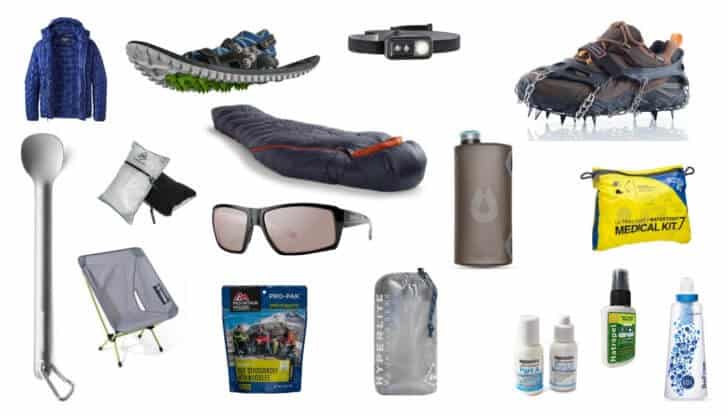 Don’t worry, it’s not one of those holiday gift guides where the author writes words like “best” and “indispensable” and “must-have” and recites bullet points from press releases and specifications tables. My hope is that if you’re reading this, you get something a little more than that out of what you’re about to read. Hopefully, you’ll find some valuable product info, some education, and some tidbits on how to shop for and select gear. I’ve actually used every item we recommend in this article extensively in 2017, and I’m going to share my own perspectives on why I selected this gear and why I think it’s good stuff. It’s as much a consolidation of a bunch of summary product reviews as it is my list of recommendations for backpacking gear gifts for this holiday season.
Don’t worry, it’s not one of those holiday gift guides where the author writes words like “best” and “indispensable” and “must-have” and recites bullet points from press releases and specifications tables. My hope is that if you’re reading this, you get something a little more than that out of what you’re about to read. Hopefully, you’ll find some valuable product info, some education, and some tidbits on how to shop for and select gear. I’ve actually used every item we recommend in this article extensively in 2017, and I’m going to share my own perspectives on why I selected this gear and why I think it’s good stuff. It’s as much a consolidation of a bunch of summary product reviews as it is my list of recommendations for backpacking gear gifts for this holiday season.

Who should read this article?
This holiday backpacking gear gift guide might be of interest to you if:
- You are passionate about lightweight backpacking and need some gift ideas to send to those friends and family who might want to give you a gift this holiday season;
- You have a friend or family member who is passionate about backpacking and you don’t really know what to give them;
- You’re a gear geek and just want to see what’s going on here;
- You’re a trickle-down economics skeptic, but secretly hoping for a windfall soon, and you need to at least prepare for it and create a shopping list. Also check out last year’s gear guide if you really want to get ready for your 2019 tax refund!
What type of gear is in this review?
This review specifically identifies gear that meets all of the following criteria:
- The gear is light (or at least, has a high performance-to-weight ratio);
- The gear is useful (nobody needs to waste money on gear that doesn’t actually have a meaningful amount of utility);
- The gear performs well (nothing I recommend here includes anything I haven’t personally used on multiple trips);
- The gear is (probably) appealing to a wide(ish) range of backpacking skills, styles and comfort levels – it’s as appropriate for (some!) beginners as it is for (some!) experts, and (some!) of those in between.
Black Diamond Ion Headlamp
Weight: 1.6 oz (with lithium batteries) / 1.9 oz (alkaline)
Context: For many years, I’ve used a variety of headlamps from Petzl, Fenix, Zebra, Princeton Tec, and Black Diamond. As LED technology improves, manufacturers continue to push the limits by packing more features and performance into smaller and lighter packages. However, so many headlamps I’ve used are either one-trick ponies (e.g., extremely bright but with poor battery life) or fail to sufficiently “tick” the performance boxes that I want.
Why you should consider the Black Diamond Ion Headlamp: After reviewing this year’s headlamp market to purchase one as a gift for my wife, I finally settled on the new model* Black Diamond Ion Headlamp for its weight (1.9 oz durability (including a rubberized housing), waterproof housing design (IPX8), comfortable headband, power (100 lumens), efficiency (up to 180 hours of battery life), dual LED (white and red), dimmability, a weather-sealed / glove-friendly switch, easy-to-change battery compartment, easy-to-find batteries (2xAAA), and compact form factor.
*Important – don’t buy the wrong model of the Ion! Before 2017, the Black Diamond Ion Headlamp had only one lens, wasn’t as water-resistant as claimed, had a less durable housing, a finicky switch, and boxy lines. I can’t recommend the old ones – don’t even buy them if they’re on clearance. The new (2017-) model is a much better performer. 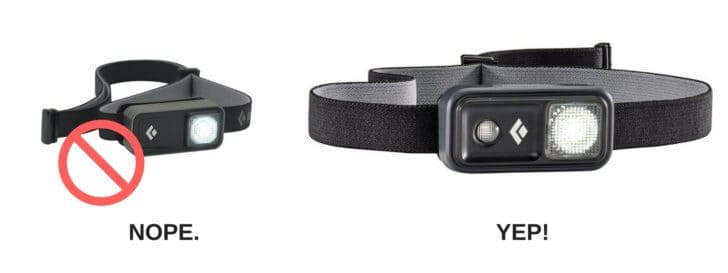
- MSRP: $24.95
- How to Buy It: Eastern Mountain Sports | Backcountry | Mountain Gear or shop for deals in the GearFinder.
- Recommended Batteries: e2 Li AAA – $10.95 at REI.
Don’t Buy This Headlamp If:
- You’re an SUL hiker counting grams – there are lighter options.
- You expect to navigate in the dark (especially mountaineering or off-trail, packrafting, or trail running) – the Ion just doesn’t have the power to illuminate enough area for that kind of travel challenge. This one’s my pick for that kind of stuff.
 Smith Polarchromic Sunglasses
Smith Polarchromic Sunglasses
Weight: 1.3 oz
Context: I used to wear “sports-fashion” wrap-style sunglasses with plastic lenses where polarization, lens clarity, and hinge durability seemed like afterthoughts. Inevitably, I would lament the expense of dropping a bunch of cash on sunglasses that would be all but worn out after a season of fishing, hiking, backpacking, packrafting, snowshoeing, skiing, and Sierra-walking. Having spent the better part of my adult life analyzing backpacking and mountaineering gear performance, I figured it was time to allocate some of my analytical energy to the sunglasses market. My criteria were simple: find a well-built frame that housed a lens that made few compromises in performance. This search led me to the Smith Challis Techlite Polarchromic Sunglasses.
Why you should consider the Smith Challis Techlite Polarchromic Sunglasses:
- Ultralight glass lens: Glass is more durable than plastic (more scratch resistant). I’ve worn these glasses all year, shoved them in pockets and bags without a protective case, and they still show no scratches. However, conventional lens glass is heavy, and Techlite glass solves that problem – it retains strength and durability with less glass (thinner lenses) by tweaking the chemical composition of the glass and the structural shape of the lens.
- Visual acuity and polarization performance: having tried on many dozen sunglasses in my search, and testing their low light performance and glare resistance, the Smith Challis Techlite Polarchromic Sunglasses seemed to be in a league of their own. For me, the ultimate field test is spotting trout feeding at the bottom of a stream in low-light (e.g., cloudy or early morning/late evening hours). With that context as my litmus test, I can say that the Smith Techlites are the most effective polarized lens I’ve ever used in terms of cutting glare in low light.
- Polarchromic: UV-sensitive dyes are embedded into the lens glass that darkens (thus reducing light transmission levels) in very bright conditions. For outdoor sports in general, and snow- and water-travel in particular, I believe this is one of the most valuable attributes of a high-performance lens. A photo-sensitive transition lens like the Smith Polarchromic increases the versatility of polarized sunglasses and provides a factor of safety in sports like skiing or packrafting where a too-dark or too-light lens reduces your ability to read terrain or water features.
Some shopping tips: The sunglass market changes rapidly, and on a dime’s notice, a sunglass brand may discontinue one model only to “re-invent it” next year under a different name. Be prepared to save loads of money and get closeouts for 50% off or more. Also, what I’m really reviewing here is the Smith Techlite glass lens combined with its Polarchromic (polarized, photochromic) treatment. The Challis is just the frame model I like personally and fits my face. YMMV, so be sure to check out other frame styles, and if you find one you really like that doesn’t offer both Techlite glass and Polarchromic treatment, opt for the Polarchromic – that’s really where the performance of Smith optics shines. REI offers a good selection of Smith Polarchromic sunglass styles. 
- MSRP: $239
- How to Buy It: REI or shop for deals in the GearFinder
Don’t Buy These Sunglasses If:
- You can’t keep track of your stuff. It would suck for you to lose a pair of sunglasses that cost more than most people spend on supplies and gas for a week-long backpacking trip. Instead, get these.
- You try on a pair of Smith Techlite Polarchromics, look outside, and “feel like the world is a prettier place.” These are technical machines, and that’s what you’re paying for. Respect the tech. Consider these instead.
Helinox Chair Zero
Weight: 16 oz
Context: I broke my back in 2005. Since then, sitting on a low rock, log, or bare ground after a long day on the trail instills emotions that range from “uncomfortable” to “abusive”. A camp chair that provides some lower back support is critical for my comfort. I’ve tried Crazy Creek Chairs, Therma-Rest Chairs, Big Agnes Chairs, Sling Chairs, little tiny collapsible stools, and even my backpack filled with an inflated, rolled-up Neo-Air pad. None of these worked well for me.
Then I discovered Helinox Chairs and I fell in love. I’ve owned the Helinox Ground Chair (read the review), the Chair One, and the new Chair Zero model. The new Helinox Chair Zero raises the distance off the ground and shaves five ounces of the Ground Chair. While I personally prefer the reclining position of the Ground Chair, the Chair Zero is going to be a more comfortable and popular (lighter!) option for most hikers.
Why you should consider the Helinox Chair Zero:
- MSRP: $119.95
- How to Buy It: REI | CampSaver or shop for deals in the GearFinder
Don’t Buy This Chair If:
- You’re like, 17 years old or tougher than Yucca. You won’t appreciate its benefits. Instead, try this – it’s lighter and cheaper!
 Crescent Moon EVA Snowshoes
Crescent Moon EVA Snowshoes
Weight: 3.5 lb
Context: Having lived in the northern US Rocky Mountains (Montana, and now Wyoming) for the past 23 years, snowshoeing is a staple of my winter outdoor activity. I’m really only interested in snowshoes that are lightweight, small, and have a binding nimble enough to work with trail running shoes. For extreme cold, I add a pair of ultralight neoprene overboots. My snowshoes of choice through the years have included Atlas Race, Northern Lights, MSR Lightning Ascent, and most recently, Crescent Moon EVA Snowshoes. I recently wrote a review of the Crescent Moon EVA Snowshoes and revealed the benefits of their foam deck and fixed binding. Read the review for more details.
Why You Should Consider the Crescent Moon EVA Snowshoes:
- EVA foam deck is insulating and keeps feet warmer;
- Rockered deck design, combined with fixed binding, makes running easier;
- Fixed binding, combined with excellent cleat traction system, makes the snowshoes good climbers on steep terrain in low- and medium-density snowpacks;
- Fixed binding makes these exceptionally maneuverable and controllable in any direction;
- Minimal (read: none) ice/snowballing or buildup when snowshoeing in warm temperatures.
- MSRP: $159
- How to Buy It: REI | CampSaver | Backcountry or shop for deals in the GearFinder
Don’t Buy These Snowshoes If:
- You don’t live in a snowy place, but just want to have them just in case. Just in Case leads to unnecessary consumer spending and is a tax on the environment (it is good for the storage bin industry, however).
- You predominantly wear boots in the winter. Boots are stiffer, and combined with the non-hinged binding, will make for an uncomfortable pairing with these snowshoes. Instead, try Northern Lites.
- You are going to use snowshoes for mountaineering that includes steep and icy terrain. Instead, have a look at MSR Lightning Ascents.

Hillsound Trail Crampons
Weight: 15.7 oz
Context: I came to ultralight backpacking from a Pacific Northwest mountaineering background. Coming of age in Seattle, I spent my summers in the Olympic Range and my weekends on the glaciated peaks and volcanos of Washington State. I owned an ice ax and crampons and a headlamp long before I purchased my first sleeping bag and tent. I still own “at least” (no, I’m not going to divulge the exact number) four pair of crampons – one pair for water ice climbing, one pair for alpine ice climbing, one pair for steep glacier trekking, and one pair for terrain where the others are overkill. For the past decade, this fourth pair has been (primarily) Kahtoola Microspikes, which have served this purpose well enough. But they aren’t without their limitations, and that’s where the Hillsound Trail Crampons come in.
Why You Should Consider Hillsound Trail Crampons Over Kahtoola Microspikes:
- Hillsound Trail Crampons have slightly longer, sharper spikes (1.5 cm vs. 1.0 cm for Kahtoola Microspikes) and are better for icy surfaces (I’ve proven this every time I use them), and are “theoretically” better in deeper snow (but the differences here are imperceptible).
- Hillsound Trail Crampons have a hook-and-loop instep strap that keeps them secured to your shoe on steeper terrain, when side hilling, and when trail running on rough terrain. The harder terrain you’re on, the more noticeable this benefit is.
- Hillsound Trail Crampons are five bucks cheaper than Kahtoola Microspikes. Five bucks can buy you about 6,300 Calories at today’s market prices.
- MSRP: $65
- How to Buy It: REI or shop for deals in the GearFinder
Don’t Buy These Crampons If:
- You want the absolute lightest trail crampon. Kahtoola Microspikes are about 5 oz lighter, or you can take a look at these titanium crampons for extreme lightness.
- You’re traveling on steep, glaciated ice (e.g., slopes steeper than 20 degrees) with a heavy pack. For that kind of terrain, you’re going to want more security, so consider something like this.
 Patagonia Micro Puff Hoody
Patagonia Micro Puff Hoody
Weight: 9.3 oz
Context: I’ve long been a proponent of ultralight down jackets. For the past several years, my go-to down jacket for summertime ultralight backpacking in dry climates has been the Goosefeet Down Jacket. Here’s how I incorporate that down jacket in a bad weather clothing system. However, I spend a lot of time hiking in conditions where a down jacket isn’t a great option, and after my last Cocoon UL 60 Hoody bit the dust, I’ve been experimenting again with synthetic insulation from other manufacturers, including most recently, the Patagonia Airshed (link to review) and Micro Puff Jackets. I’ve been wearing the new Patagonia Micro Puff Hoody since September as an insulation layer and can say without reservation that it’s warmer than my old Cocoon UL 60 Hoody, which at the time (2007-2009) had a higher warmth:weight ratio than any synthetic on the market. My most positive experience so far with the Patagonia Micro Puff Hoody came while guiding in blizzard conditions up in Montana. I wore it under a shell while hiking down from an 11,000-foot pass, late in the day as temperatures were dropping into the teens. I also wore it during the frigid mornings and evenings in our snowy camps. To my surprise, when integrated with the rest of my clothing system, it performed much better than I expected, and I stayed warm and comfortable.
Why You Should Consider the Patagonia Micro Puff Hoody:
- It’s very light – 9.3 oz. This makes it one of the lightest synthetic insulated hooded jackets available.
- The synthetic insulation has a higher warmth:weight ratio than traditional continuous filament (e.g., Apex) or short-staple (e.g., PrimaLoft) synthetic insulation because the increased surface area of the insulation (on a per gram basis) is higher than other types due to the branched filament design. This means it looks more like a down cluster than a single fiber. Also – the insulation requires no scrim, which also adds weight.
- Huge front hand warmer pockets (they easily fit a sizable water bottle) and inside stash pockets (I stow my gloves/mitts in here to dry them out) are surprising additions, considering the jacket is this light.

- MSRP: $299
- How to Buy It: Patagonia or shop for deals in the GearFinder
Don’t Buy This Jacket If:
- You can’t afford it. At $299, it’s not cheap. Don’t go into debt or give up the opportunity to spend money on a trip just so you can own what you think might be the “latest and greatest” piece of gear on the planet.
- You hike mostly in warmer, drier climates. Take a look at ultralight down jackets instead.
- You want the absolute lightest synthetic insulated jacket available. That honor belongs to Climashield Apex-insulated jackets made by Enlightened Equipment and Nunatak – these jackets are generally shorter in length, less fitted, have more rudimentary hoods, fewer pockets, and synthetic insulation that is no longer pushing the performance edge of what’s state of the art today (yet!). That said, I highly recommend the even heavier Skaha Apex (12-13 oz) for its exceptional warmth:weight ratio.

REI Magma 10 Down Sleeping Bag
Weight: 1 lb 14 oz
Context: I’m a quilt user, even during the fringe seasons. I’m so enamored with quilts that I even like experimenting with them as it gets chilly, and have slept in a winter-weight quilt down to minus 25 F during the winter. However, my experiences have led me to believe that at some point, the warmth:weight ratio of a high end (ultralight shell, high FP down) hooded mummy sleeping bag starts to outweigh the benefits of a quilt. This happens somewhere in between “fall” and “winter” for me, when low temperatures start dropping into the teens. My favorite down sleeping bags have always been made by Western Mountaineering, Nunatak, and Feathered Friends, with a particular nod to the FF Lark Nano ($479), which is my recommendation for a fringe-season sleeping bag for its construction quality, warmth:weight ratio, ease of use, and fabric performance (balance of DWR with breathability). The WM VersaLite 10 ($560) is a close second but suffers from heavily calendered fabrics that retain a lot of condensation. Did you notice the price of these bags? Quality doesn’t come cheap, and that’s where the REI Magma 10 should be considered. I’ve been using the bag this year since September, camping, and hiking in temperatures down to the single digits. I don’t believe it’s quite as warm as either the Lark Nano or the VersaLite 10, but it is a little lighter, a lot cheaper, and a pretty incredible value.
You Should Consider the REI Magma 10 Down Sleeping Bag If:
- You want a very high performing sleeping bag (i.e., high warmth:weight ratio) at a price that is $100-$200+ cheaper than bags from specialty manufacturers.
- You want a mummy bag that has a little more kicking room, appreciate a very-well designed and easily adjustable hood closure, and is made with high quality down and fabrics.

- MSRP: $349
- How to Buy It: REI
Don’t Buy This Sleeping Bag If:
- You want something that top-tier craftsmanship, materials, and performance. Check out the Feathered Friends Lark Nano in that case.
- You’re going to use it predominantly in temperatures near its low safety rating, which is 10 deg F. Most people will start to get a little chilly in the Magma 10 as temperatures drop into the mid-teens and lower.
Stocking Stuffers: My Recommendations
Here’s a list of little things that I recommend. In order to make the cut, these items had to meet a few key criteria:
- They have been and still are, in my backpacking kit for several years. Nothing on this list is going to be today’s “hot new trend” (and likely, tomorrow’s forgotten trinket).
- They have to be something that is appealing to a wide variety of people. This is a gift guide, after all, and if you are shopping for a backpacker, I at least want you to have a high level of confidence that these items are things they would appreciate.


A light, durable, and waterproof set of stuff sacks. These are the core of my ultralight backpacking organizational system.

Most ultralight backpackers put together their own minimalists first aid kits, but this one is a great option for a conservative, out-of-the-box-ready-to-go kit that contains just the essentials for anything up to a week-long trip.


This is the spoon to get if you eat out of packaged meal bags, as it can reach the bottom of the bag without getting your knuckles grimy.
- Goosefeet Down Socks – $65
- Dirty Girl Gaiters – $23
- Buff – $20
- Mountain House Packaged Meals – $7 to $11
What if you don’t know what to buy your backpacking friend or family member, or you’re running late and need to send a gift by email?!
- Gift them a Backpacking Light Membership or Online Course (don’t forget to check the box “This is a gift” when you checkout!)
- Buy them an REI Gift Card or REI Membership
- Make a donation in their name to a long distance trail advocacy organization like the Pacific Crest Trail Association, the Appalachian Trail Conservancy, or the Continental Divide Trail Coalition.
Find Gear On Sale
Backpackinglight.com works with retail merchant partners to maintain a live database of outdoor gear. Use this search engine to discover current sales. Disclosure: if you click on a link and make a purchase, we receive a small commission, which helps support the site – thank you.
Disclosure
No manufacturer paid for any type of “product placement” in this gear guide. These selections are my own, based on my own personal experience with them. I’ve used all of these products extensively and have enjoyed generally positive experiences with this gear. YMMV. Some links are affiliate links, which means if you click through and make a purchase, Backpacking Light gets a small commission on the sale. This comes at no extra cost to you and helps support Backpacking Light’s efforts to publish authoritative and valuable information about lightweight backpacking gear and techniques, inspiring stories and film festivals, and remain an active member of the outdoor industry to promote and protect opportunities for public outdoor recreation.

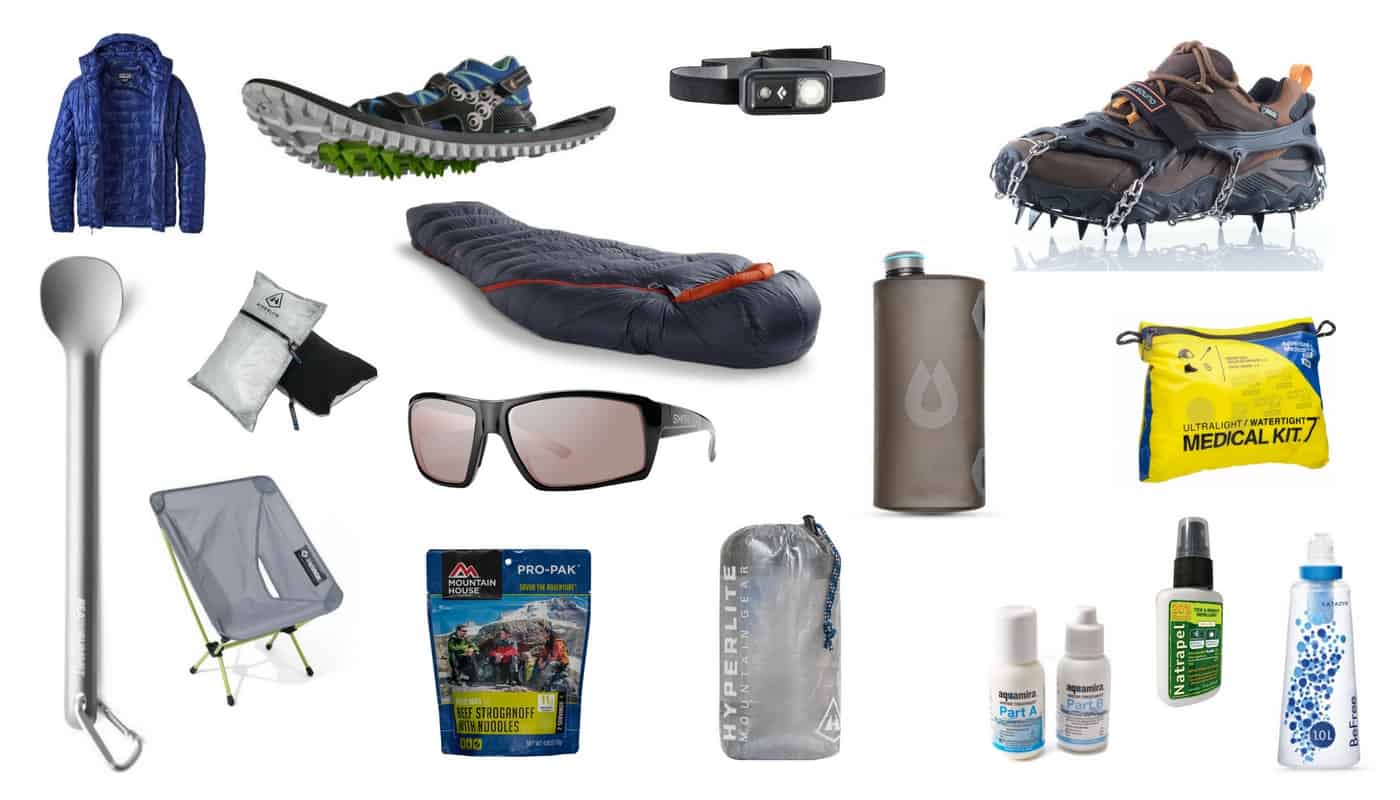
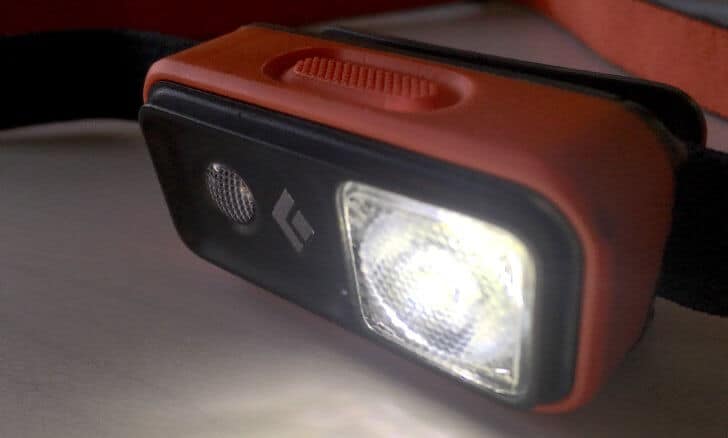



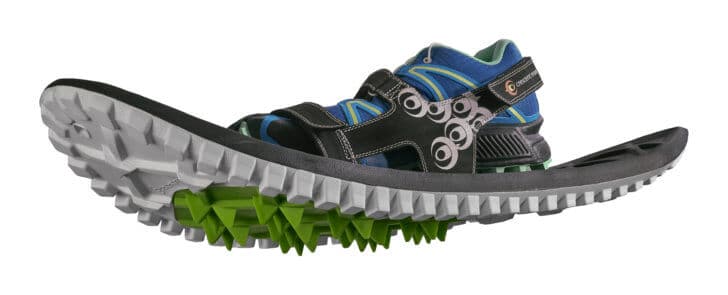
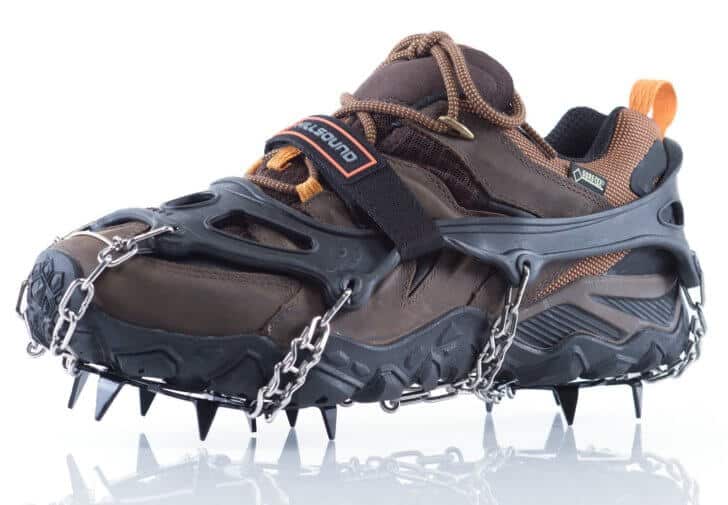






Home › Forums › Holiday Gift Guide: My Personal Lightweight Backpacking Gear Recommendations of 2017